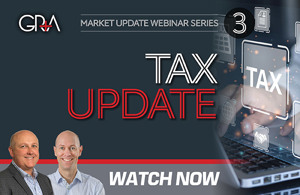
From time to time clients contact us to ask what their employees are entitled to with regard to annual leave and sick leave. This is obviously an important thing to get right, for both employers and their staff.
The Labour Party made a promise before the recent election to modify sick leave if they remained in power. Now we have a Labour Government, they are now implementing those changes. So I thought it worthwhile to overview annual leave and sick leave legislation as it is now, and what it is likely to look like moving forward.
Annual Leave
All employees become entitled to four weeks' annual leave after 12 months of continuous employment, and the right to this leave applies to all types of employees.
• In limited circumstances, some employees may be paid their annual holiday entitlement on a pay-as-you-go basis.
• Employees can ask to cash-up up to one week of their four weeks’ minimum entitlement to annual holidays each year.
• If a business has an annual closedown, employees may have to take their annual holidays entitlement then. In general, however, employees should be able to decide when to take their annual holidays.
• If an employee has been working less than a year, they aren’t entitled to annual holidays but their employer may let them take some of their annual holidays in advance.
• If an employee's job ends before they become entitled to annual holidays (and the employer has not been paying annual holidays on a paid-as-you-earn basis), the employer must pay out any outstanding annual holidays at 8% of the employee's total before-tax earnings from the time they started the job to the end.
Sick Leave
Sick leave is paid time off work if an employee, their spouse, partner, dependent child, or other person who depends on them is sick or injured.
• All employees (including part-time and casual employees) are entitled to five days' sick leave if:
• they have six months’ current continuous employment with the same employer, or
• they have worked for the employer for six months for:
o an average of 10 hours per week, and
o at least one hour in every week or 40 hours in every month.
• For each 12-month period after meeting the above, each employee gets at least five days’ sick leave. If in any year the employee doesn’t meet the criteria, then they don’t get any new sick leave entitlement, but can use their sick leave balance which may have carried over. An employee may re-qualify for sick leave as soon as they meet the criteria.
• Employees who don’t use their sick leave can accumulate it, up to 20 days.
• Sick leave entitlements are not pro-rated in any way. Every employee is entitled to five days’ sick leave per year, i.e. five days away from work, if they or a dependent are sick or injured.
• A “day” is constituted according to the individual and their normal hours of work on the day they’re sick. If they normally work a seven-hour day, then it’s seven hours. If they work a 4.5 hour day, then it’s 4.5 hours. Sick leave would be paid at the rate the employee would normally have earned for the day, i.e. relevant daily pay for the day in question.
• So a part-timer who works only three days a week is still entitled to five days’ sick leave. A casual employee who works only one day a week could still qualify for five days’ paid sick leave if their employment extended beyond six months.
Changes to Sick Leave
The Government expects to have the law changed by the middle of next year, with changes coming into effect two months after it passes.
Workers who have already worked for at least six months, will have their leave increased to 10 days when they reach the anniversary of the first time they completed six months. The total amount of sick pay that can be saved will remain at 20 days under the new amendments.
Summary
If you are ever unsure about sick or holiday leave, talk to an employment lawyer or a GRA accountant (+64 9 522 7955, [email protected] or via our website).

John Heaslip
Business Advisory Director
Did you like this article? Subscribe to our newsletter to receive tips, updates and useful information to help you protect your assets and grow your net worth. We're expert accountants providing expert advice to clients in NZ and around the world.
Disclaimer: This article is intended to provide only a summary of the issues associated with the topics covered. It does not purport to be comprehensive nor to provide specific advice. No person should act in reliance on any statement contained within this article without first obtaining specific professional advice. If you require any further information or advice on any matter covered within this article, please contact the author.
Comments
Testimonials
Always found Salesh approachable and a 'listener'. The backup team are fast and efficient.
- Pete B, June 2024
Gilligan Rowe and Associates is a chartered accounting firm specialising in property, asset planning, legal structures, taxation and compliance.
We help new, small and medium property investors become long-term successful investors through our education programmes and property portfolio planning advice. With our deep knowledge and experience, we have assisted hundreds of clients build wealth through property investment.
Learn More







































